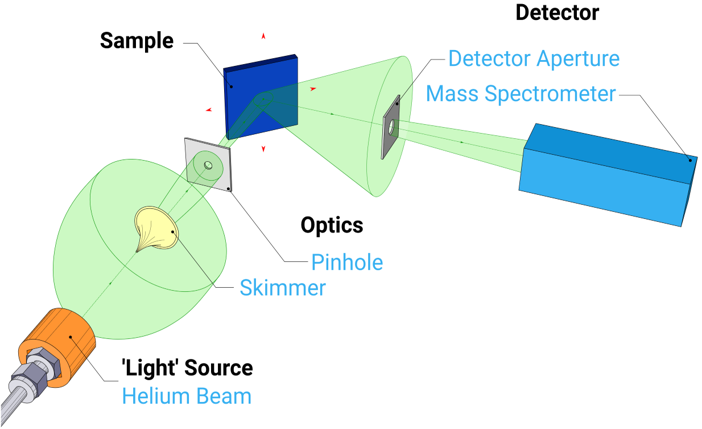
Within our group, we have a strong focus on instrument development. Our unique instrumentation enables us to research physical regimes that cannot be studied anywhere else in the world. Our B-SHeM system, shown in the photograph at the top of this page, was recently designed, constructed and comissioned within the group, building on the technque of Scanning Helium Microscopy (SHeM) we co-developed over the last decade.
Case studies of recent instrumentation projects are given below.
Scanning Helium Microscopy (SHeM)
 SHeM is a new form of microscopy that has become one of the most promising developments in the field of damage-free high-resolution imaging.
SHeM is a new form of microscopy that has become one of the most promising developments in the field of damage-free high-resolution imaging.
The technique was conceived in Cambridge, then first developed as part of a collaboration with Newcastle University, Australia, resulting in our first 'A-SHeM' microscope. Since then we have further developed all the key aspects of the technology, resulting in a more recent 'B-SHeM' instrument. These are both are now in active use addressing scientific challenges. We have recently launched a partnership with Ionoptika Ltd. to develop a commercial SHeM.
Full details of the instrumentation and recent publications are available on the Cambridge Atom Scattering Centre website.
[1] SM Lambrick et al., Appl. Phys. Lett. 116, 061601 (2020);
[2] M Bergin et al., Scientific Reports 10, 2053 (2020);
[3] M Barr et. al., Nature Communications 7, 10189 (2016).
Ultra high sensitivity helium detectors
 We build the world’s most sensitive helium atom detectors, to enable our experimental programmes.
We build the world’s most sensitive helium atom detectors, to enable our experimental programmes.
[1] Bergin et al, Rev. Sci. Instrum. 92, 073305 (2021);
[2] Martens et al., NIMB 340, 85 (2014);
[3] Alderwick et al., Rev. Sci. Instrum. 79, 123301 (2008).
